Imagine this scenario:
You're in a lecture. You want to capture all of the details the instructor is teaching you. You write down everything important...or you think you wrote everything.
Your notes look like this:

Uh oh! When it's time to study for your quiz, your notes don't make as much sense as you had expected. You feel anxious.
Next time, try sketchnoting to help you retain important details.
How Does Memory Work?
The brain associates bits of information in such a way that we can recall items either on their own or by being "reminded" of them by a cue (a hint or guiding suggestion).
According to Johns Hopkins Medicine:
When we learn something — even something as straightforward as a person's name — we establish connections between neurons in our brain. These synapses develop new pathways between nerve cells, effectively reshaping the brain's wiring.
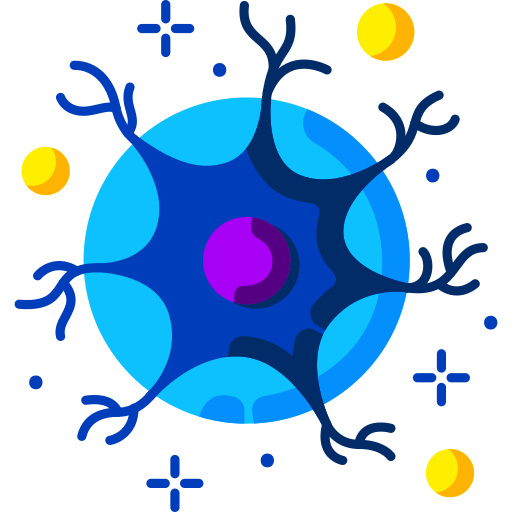
Our brains are visual. This means they're designed to remember pictures and images more easily than words.
What is Sketchnoting?
Sketchnoting is a brain-centered approach to creative note-taking that enhances retention. Since our brains are wired for visuals, sketchnoting can effectively support vocabulary building, comprehension, and note-taking. It boosts engagement, focus, understanding, and memory.
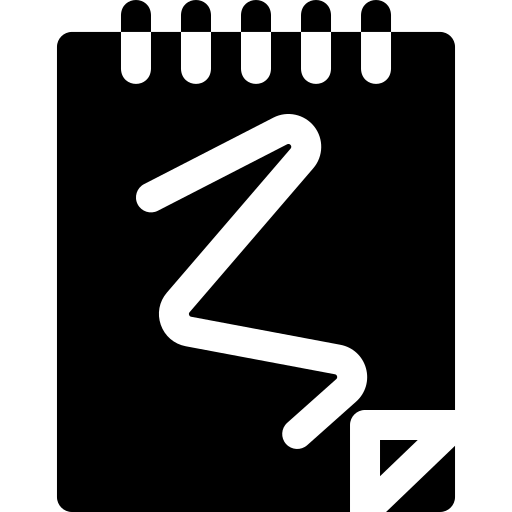
Sketchnoting combines written notes with visual elements like drawings, shapes and symbols.
Elements of Sketchnoting
Hierarchy: Structure the sketch by using frames, bullets, arrows, and dividers to organize ideas.
Metaphors: Symbolism plays a big role in sketchnoting. Small doodles and icons add layers of meaning.
Fonts: Handwriting styles act as fonts, setting the tone and highlighting key ideas, titles, or subtitles.
Color: An optional element that can add emphasis and visual interest.
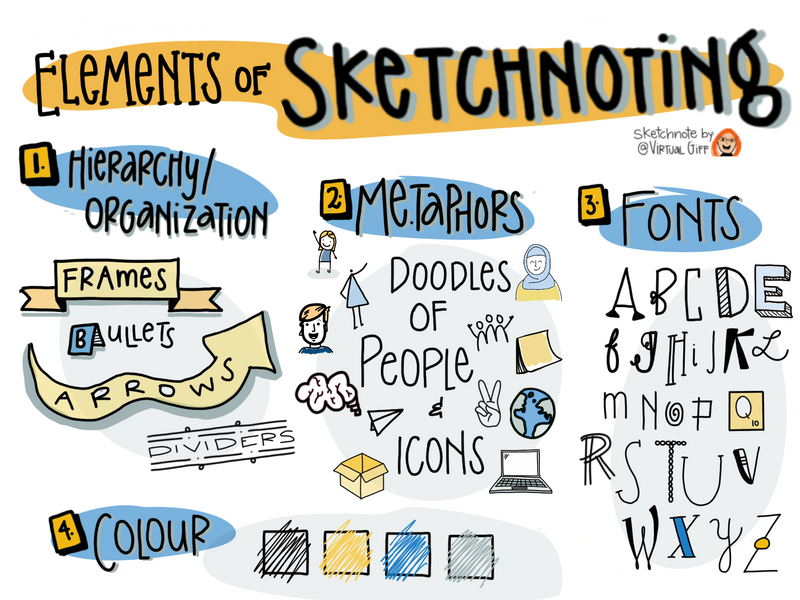
Image courtesy of Jenn Giffen via the Noun Project. To hear an audio description of the image above, click the play button on the audio player below:
Quiz
Alex wants to include drawings in his chemistry sketchnote. He doesn't think his artistic skills are great. What kind of drawings can he include on his page? Select all that apply:
Benefits of Sketchnoting
Sketchnoting is a personal way to process and remember information. It reflects your unique thought process, and as long as it makes sense to you, it serves its purpose. Ten people sketchnoting the same lesson will produce ten distinct notes, showcasing the individuality and flexibility of this method.

Benefits include:
Enhances memory & focus: Sketchnoting boosts concentration, improves memory, and strengthens mental processing, helping you retain and recall information more effectively.
Encourages presence: By actively engaging with the material, sketchnoting keeps you grounded and present in the moment.
Supports equal learning opportunities: This technique levels the educational playing field, making learning accessible to a wider range of people.
Accelerates learning: Sketchnoting helps you absorb information faster and understand concepts more deeply.
Provides cognitive benefits: It reduces stress, enhances well-being, and sparks creativity, making learning an enjoyable experience.
Sketchnoting Made Simple (No Art Skills Needed)
Start with a headline: Give your page a title or main theme to set the focus.
Highlight key ideas: Write a thought or phrase, then draw a box or cloud around it to make it pop.
Add visuals: Use stick figures, icons, or any drawings that resonate with the idea. They can be as simple or complex as you like.
Add borders and dividers: Give structure to your notes with creative borders and dividers.
Doodle freely: Don’t worry about being an artist — draw what you can, and if you need inspiration, plenty of online resources can help.
Fix mistakes creatively: If you make an error, cover it up with stickers or washi tape, or simply erase and try again.
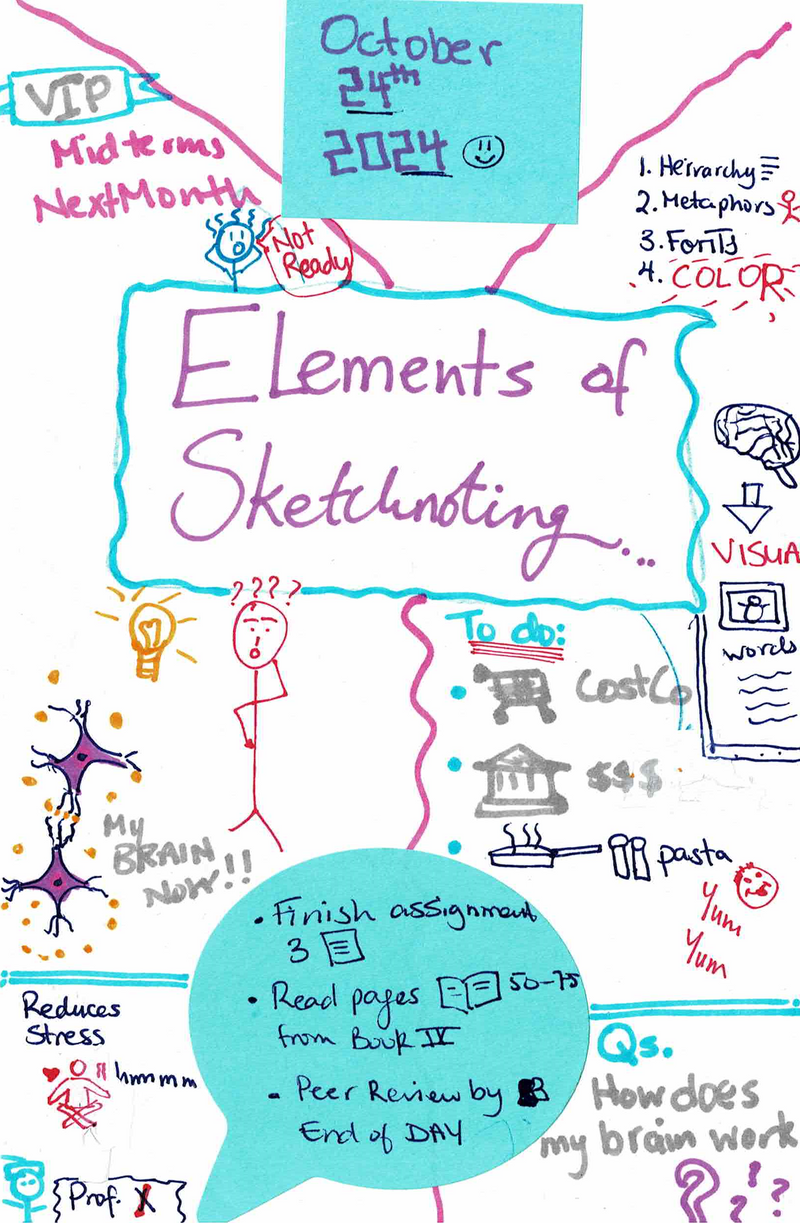
Image created by the author. To hear an audio version of the information in the image above, click the play button on the audio player below:
Take Action
Sketchnoting is what you make of it: it's your thing" Some sketchnoters don’t include doodles at all and just have really nice handwriting and frames and arrows. At the end of the day, it’s what makes sense for you, the note-taker.
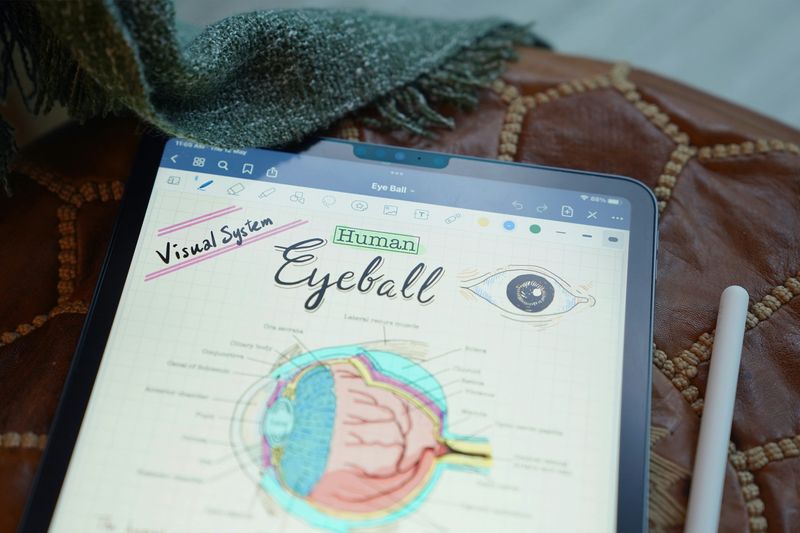 Photo by GoodNotes 5 on Unsplash
Photo by GoodNotes 5 on UnsplashWhether you prefer pen and paper or you are a digital person, sketchnoting works well either way. Try it out!
Your feedback matters to us.
This Byte helped me better understand the topic.

